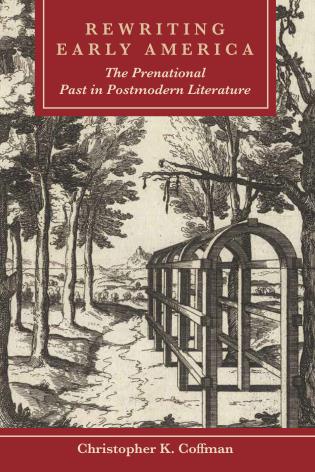Seeing Possibility and Hope in America’s Past
Christopher Coffman’s New Book Examines Postmodern Engagement with Prenational America
In Thomas Pynchon’s novel Against the Day, the character Frank Traverse experiences a vision after stumbling onto the ruins of a pre-Columbian site in Mexico. He sees the ways white men and corporations have destroyed native peoples and sacred land. But he also sees a vision of pre-Columbian culture and possibilities for new physical, spiritual, social and aesthetic orders.
 Pynchon “balances the pessimism of the darker part of Frank’s vision with a sense of possibility and hope,” says College of General Studies Senior Lecturer Christopher K. Coffman.
Pynchon “balances the pessimism of the darker part of Frank’s vision with a sense of possibility and hope,” says College of General Studies Senior Lecturer Christopher K. Coffman.
How do postmodern authors like Pynchon engage with the American past in literature? It’s a question that Coffman contends with in a new book of literary criticism, Rewriting Early America: The Prenational Past in Postmodern Literature (Lehigh University Press, 2018).
Looking at texts by seven postmodern writers, Coffman finds that many of these texts “undertake more constructive and hopeful projects with regard to the American past than critics usually recognize.” Coffman chose these writers—Pynchon, John Berryman, John Barth, Paul Muldoon, William Vollmann, Susan Howe, and Toni Morrison—because they engage with the past in a “playful” way.
By that, he means they recognize that literary rules should occasionally be broken and that breaking those rules can allow a new perspective to emerge. They also explore new modes of presenting truth, rather than simply sticking to the historical model. They recognize that literature can explore, Coffman says, “not only what has existed or does exist, but also what may have existed or may yet exist.” This approach shows an openness to the unexpected—a “playful engagement” that is especially well-suited, Coffman says, to an era characterized by “amorphous, fluctuant, and porous cultural and political boundaries.”
Coffman’s book differs from past literary criticism in that it focuses on “visions of American communities defined not by marginalization and oppression, but by responsive understanding and inclusion.” Coffman finds in later postmodernist work “more space for sincerity” than there was in earlier postmodernist literature—an interest in finding “American spaces and American moments when sociocultural values were not so corrupt or debased as they have tended (and continue) to be.”
That contrast—darkness with hope—is what makes the American past such rich literary material. The hope holds a deep appeal for anyone who’s suffered injustice, while the tension between optimism and horror is deep material for literary minds, Coffman says: “That tension makes possible endless stories about the contradictions of this place, and the difficulties and fascination of being an individual here.”
The prenational era was a time when Puritans were claiming the New World as a “city on a hill,” and the boundaries and meaning of America were still to be determined. Coffman sees some similarities between the colonial era and our own. Both eras have their own instabilities and unpredictable change, “self-contradictions and ambiguities.” This allows, Coffman says, for the salutary playfulness he sees in these postmodern writers—“a playfulness that is fundamental to literary aesthetics, and perhaps also, these writers’ works suggest, to healthy ethical and political systems.”
Françoise Palleau-Papin, professor of American literature at the University of Paris XIII, called Coffman’s book “brilliant” and said, “It is no small prowess to have written a page-turner of such intellectual scope.” Rewriting Early America: The Prenational Past in Postmodern Literature is available now.
—By Alisa Harris